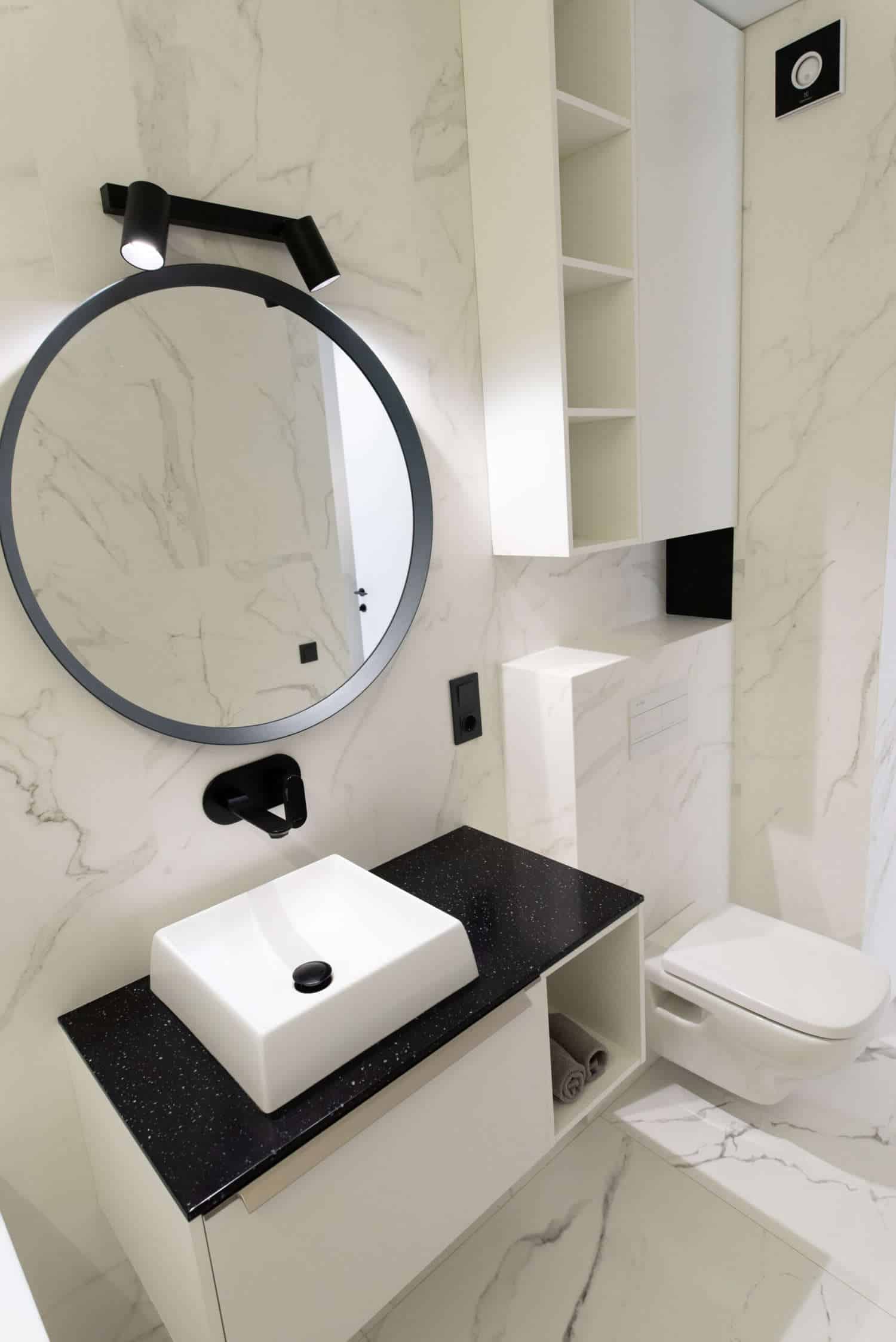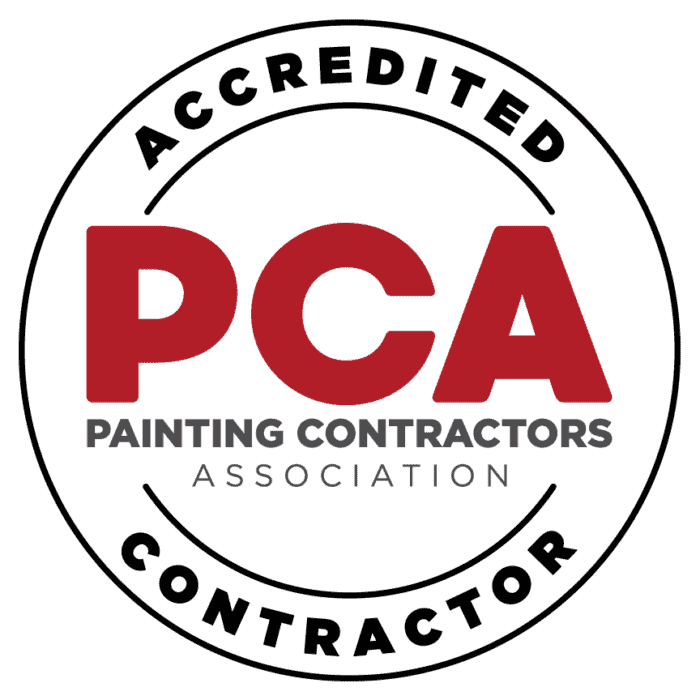Interior paint cracking isn’t just an eyesore.
It’s a sign that something went wrong—either before the paint was applied, during application, or in the years after. A paint crack may start as a hairline fracture, barely visible, but it can grow into a larger flaw that compromises the wall’s protection and appearance.
The truth? Most paint cracks happen because of a mix of poor surface preparation, environmental stresses, low-quality paint, and structural movement in the substrate. Understanding these causes is the first step toward preventing costly repaints.
In this guide, we’ll look at the science behind paint cracking, break down the main causes, show you the right products and techniques to prevent it, and explain how professional services tackle this problem for lasting results.
Understanding Paint Cracking: The Science Behind It

A paint crack forms when the dry paint film loses its elasticity and can no longer stretch with the surface beneath it. This happens because paint is more than just color—it’s a thin, flexible film made up of:
-
Binders (hold pigment particles together and to the wall)
-
Pigments (provide color and opacity)
-
Solvents (evaporate during drying, leaving behind the film)
-
Additives (enhance flexibility, adhesion, and durability)
When these components are compromised—either by poor formulation, application mistakes, or environmental conditions—the paint becomes brittle. As the wall expands, contracts, or moves slightly, the paint cracks.
Types of Paint Cracking
| Crack Type | Appearance | Common Cause |
|---|---|---|
| Crazing | Very fine, web-like cracks | Aging paint, loss of flexibility |
| Alligatoring | Large, patterned cracks like reptile skin | Applying oil paint over latex, or painting over glossy surfaces |
| Peeling | Paint detaches in flakes | Poor adhesion, moisture under paint |
| Checking | Small linear cracks | Rapid temperature changes, improper drying |
Understanding the type of paint crack you have can point directly to its cause—and the right repair method.
Main Causes of Interior Paint Cracking

Surface Preparation Problems
Most paint failures begin before the first coat is even applied. If the surface isn’t clean, dry, and sound, the paint won’t bond properly.
-
Dust, grease, or old flaking paint creates a barrier between fresh paint and the wall.
-
Skipping primer or using the wrong type means the paint won’t anchor properly.
-
Painting over damp surfaces traps moisture, leading to blistering and cracking.
Environmental Factors
Paint needs stable conditions to cure properly.
-
Humidity fluctuations: In high humidity, walls can absorb moisture, swelling slightly. When the air dries, they contract, stressing the paint film.
-
Temperature extremes: Rapid heating or cooling causes the substrate to expand or shrink faster than the paint can adapt.
-
UV exposure indoors: Sunlight through windows can break down binders, making paint brittle over time.
Paint Quality and Application Errors
A paint crack is far more likely when using cheap or expired paint. Lower-quality formulations lack enough binders and flexibilizers to handle everyday stresses.
Application errors also cause trouble:
-
Over-thinning weakens the paint film.
-
Applying paint too thick can cause surface skinning before the lower layers dry.
-
Insufficient drying time between coats traps solvents, which later evaporate and cause cracking.
Structural and Substrate Movement
Walls are not as static as they appear.
-
Drywall and plaster expand and contract with humidity and temperature.
-
Wood trim and frames can swell and shrink seasonally.
-
Foundation settling or vibrations can cause micro-movements, stressing the paint film.
Product-Specific Factors Influencing Paint Cracking
Not all paints behave the same. Choosing the right type is a major step in preventing cracks.
| Paint Type | Flexibility | Adhesion | Crack Resistance |
|---|---|---|---|
| Acrylic Latex | High | Excellent | Very Good |
| Alkyd/Oil-Based | Low to Medium | Strong | Fair (can become brittle) |
| Elastomeric | Very High | Excellent | Excellent |
| Low-Cost Generic Paint | Low | Poor | Poor |
Elastomeric interior paints are rare but effective in crack-prone areas like ceilings over old plaster or wood paneling.
Modern additives—like flexibilizers and UV stabilizers—can extend the life of the paint film and reduce cracking.
Service-Specific Solutions to Prevent or Fix Paint Cracking

3D rendering of small bathroom, designed in white marble tiles with green shower wall and circular, LED light mirror above the sink
Proper Surface Preparation Services
Professional painters start with a thorough assessment:
-
Cleaning to remove all contaminants.
-
Sanding to create a bonding profile.
-
Applying a primer matched to both the substrate and paint.
-
Using moisture meters to detect hidden dampness.
Controlled Environment Painting
Temperature and humidity control during painting is essential. Professionals may:
-
Use dehumidifiers or fans indoors.
-
Schedule jobs for stable weather periods.
-
Avoid painting in unheated rooms during winter.
Using High-Quality Paint Products and Application Techniques
Pros select premium brands with a track record for crack resistance. They also:
-
Use the right tools (brush for detail, roller for walls, sprayer for even coats).
-
Apply paint at the correct thickness.
-
Enforce proper drying and curing times.
Repair Services for Existing Cracked Paint
Repairing a paint crack isn’t just cosmetic—it’s about removing the cause. The process includes:
-
Scraping away all loose paint.
-
Sanding edges to smooth transitions.
-
Filling cracks with flexible filler.
-
Priming the repaired area.
-
Repainting with quality paint.
Common Myths About Paint Cracking
-
“Cracks mean the paint is just old.”
Not always—many cracks start within months of poor application. -
“More coats prevent cracks.”
Too many coats can trap solvents and cause stress. -
“Any paint will do indoors.”
The wrong type can fail fast, especially in kitchens and bathrooms.
How to Choose the Right Paint and Service Provider
When hiring, ask:
-
Does the contractor test for moisture and substrate movement?
-
What primer and paint will they use, and why?
-
Do they offer a warranty on crack prevention?
Look for paints with:
-
High flexibility ratings
-
Strong adhesion specs
-
Manufacturer-backed durability claims
People Also Asked
Why does my interior paint crack after a few months?
Usually poor surface prep, environmental stress, or low-quality paint.
Can humidity cause paint to crack inside the house?
Yes—fluctuations in humidity cause expansion and contraction that stresses the paint.
Should I repaint over cracked paint?
Not without fixing the cause and removing the damaged layer first.
Conclusion
A paint crack is more than a cosmetic flaw—it’s a symptom.
The real solution lies in proper preparation, quality materials, controlled application, and professional expertise.
Investing in the right products and services now means you won’t be dealing with premature cracking later.






